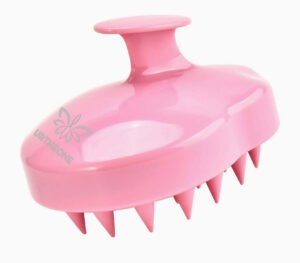Do you think you may be magnesium deficient? WELP, odds are you may be. According to the World Health Organization stats, as much as 75% of the U.S. adult population doesn’t meet the FDA recommended daily intake of 420mg. And it isn’t that easy to be assessed unless you get a Magnesium blood test from your provider.
Symptoms of Magnesium Deficiency
- Muscle Cramps or Spasms
- Fatigue or Weakness
- Nausea or Vomiting
- Loss of Appetite
- Numbness or Tingling
- Abnormal Heart Rhythms
- Mood Changes (such as anxiety, irritability, or depression)
- Difficulty Sleeping
- High Blood Pressure
- Osteoporosis or Weak Bones
And this is because magnesium plays a huge part in muscle and bone health. Every muscle and bone in our body needs magnesium to work properly and plays a key role in energy production.
Magnesium Rich Food

Here are some magnesium-rich foods:
- Leafy Greens (like spinach, kale, and Swiss chard) 1/2 cup gives you about 75mg of Magnesium
- Nuts (such as almonds, cashews, and peanuts). 1oz gives you about 80mg of Magnesium
- Seeds (like pumpkin seeds, chia seeds, and flaxseeds) 1oz gives you about 100mg of Magnesium
- Whole Grains (such as brown rice, quinoa, and oats) 1/2 cup gives you about 60mg of Magnesium
- Legumes (like black beans, lentils, and chickpeas) 1/2 cup gives you about 60mg of Magnesium
- Avocados 1 avocado = 58mg of magnesium
- Bananas 1 banana = 32mg of magnesium
- Dark Chocolate (70-85% cocoa) 1oz = 64mg of magnesium
- Tofu 1/2 cup= 37mg of magnesium
- Fatty Fish (like salmon, mackerel, and halibut) 3.5oz gives you around 30mg of Magnesium
Including a variety of these foods multiple times a day in your diet can help ensure you get enough magnesium.
But do these amounts seem daunting?
There’s an easier route to take…… including both supplements and a topical application.
Topical Oil VS Water-Based Solution

Using an oil topically differs from using a water-based solution in several key ways:
Absorption: Oil-based products tend to absorb more slowly into the skin compared to water-based solutions. Oils can create a barrier on the skin, which helps to lock in moisture, making them ideal for dry skin. Water-based solutions, on the other hand, absorb quickly and are often lighter, making them suitable for quick hydration or for oily skin types.
Moisturizing Effect: Oils are excellent for deep moisturizing because they help prevent water loss from the skin. They are often used in products designed for dry or mature skin. Water-based solutions provide hydration but may not be as effective in sealing in moisture.
Delivery of Active Ingredients: Oil-based products can better dissolve and deliver oil-soluble active ingredients, like certain vitamins and essential oils, into the skin. Water-based solutions are better for delivering water-soluble ingredients like certain antioxidants or hydrating agents like hyaluronic acid.
Shelf Life: Oil-based products often have a longer shelf life because they are less prone to bacterial growth. Water-based solutions may require preservatives to prevent contamination, as water can be a breeding ground for bacteria and mold.
If you decided to ingest a supplement the efficacy of the product is a lot lower than an oil applied topically. The pill has a longer route to the site of recovery going thru the stomach, broken down in the liver and then released into the bloodstream. The blood then distributes it to the affected sites where finally the drug gets to work. Topically, your skin absorbs the content and it immediately enters the bloodstream.
Magnesium molecules are very tiny and therefore gets absorbed into the skin very quickly and more effective than taking them orally.
The route is just plain quicker!
Benefits of Magnesium Oil

Magnesium oil is commonly used for its potential health benefits, particularly in promoting muscle relaxation, relieving pain, and reducing stress. Applied topically, magnesium oil is absorbed through the skin, where it can help alleviate muscle cramps, tension, and soreness, making it popular among athletes and those with muscle-related discomfort. It’s also used to ease headaches and migraines, improve sleep quality by calming the nervous system, and support overall relaxation. Some people use magnesium oil to boost their magnesium levels, especially if they have difficulty absorbing it through diet or supplements. Additionally, it’s believed to help with skin conditions like eczema and improve circulation, contributing to overall wellness.
1. Stimulates Hair Growth

If you’re on the hunt for natural ways to boost your hair growth, magnesium oil might just be your new best friend. This mineral powerhouse is renowned for its ability to support numerous bodily functions, including those crucial for maintaining healthy hair. Magnesium helps regulate the production of keratin, the protein that makes up your hair, and also plays a role in balancing the body’s stress levels—excess stress can contribute to hair loss. By applying magnesium oil directly to your scalp, you can enhance circulation, which improves nutrient delivery to your hair follicles and promotes stronger, more resilient growth. Plus, magnesium oil’s anti-inflammatory properties can soothe an irritated scalp, creating a healthier environment for hair to thrive. Something I use to distribute the oil evenly and help penetration is this Scalp Massager.
Incorporating this simple yet effective treatment into your hair care routine could be the key to unlocking the luscious locks you’ve been dreaming of.
2. Insomnia: Trouble Sleeping

Struggling to catch those elusive Z’s? Magnesium oil might be the secret ingredient your nighttime routine has been missing. This essential mineral is a known ally in the battle against insomnia, thanks to its role in regulating neurotransmitters that calm your mind and body. Magnesium helps to activate the parasympathetic nervous system, which is responsible for relaxation, and can also influence the production of melatonin, the hormone that guides your sleep-wake cycle. Applying magnesium oil to your skin, specifically your feet and temples, before bed can be a soothing ritual that not only aids in muscle relaxation but also prepares your body for a restful night. Its calming effects can help ease anxiety and promote deeper, more restorative sleep, turning those restless nights into peaceful slumbers.
3. Alleviate PMS Symptoms: Cramps

If you’re looking for a natural remedy to ease those pesky PMS cramps, magnesium oil could be your new go-to. This mineral plays a crucial role in muscle relaxation and can help reduce the intensity of cramps by relaxing the uterine muscles. Applying magnesium oil directly to your lower abdomen can help alleviate pain and discomfort, thanks to its anti-inflammatory properties and ability to improve blood flow. Magnesium also helps balance hormones and regulate mood swings, making it a double whammy for tackling those bothersome symptoms. Incorporating magnesium oil into your self-care routine during that time of the month can offer soothing relief and support, helping you feel more comfortable and in control. Give it a try and discover how this simple addition might make your PMS experience a little bit easier to manage.
4. Muscle Spasms

Muscle spasms can be a real pain, but magnesium oil might be just the remedy you need to find relief. This mineral is essential for muscle function and helps regulate the contraction and relaxation of muscles. When applied topically, magnesium oil penetrates the skin and delivers its benefits directly to the affected area, helping to soothe and calm overactive muscles. Its anti-inflammatory properties also contribute to reducing muscle pain and cramping, making it a great addition to your post-workout routine or anytime you feel those pesky spasms starting up. By incorporating magnesium oil into your self-care regimen, you can help ease discomfort and support muscle recovery, allowing you to move more freely and comfortably throughout your day.




